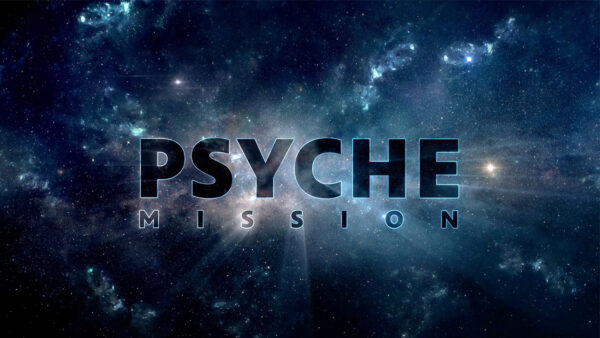Under Arizona
Jan. 30, 2011
“Arizona is one of the most diverse and complex and exciting geological provinces in the whole world. We have 1700 million years of history here that really unlock the whole history of North America.”
Lee Allison
State Geologist of Arizona
Director of the Arizona Geological Survey
Two billion years in the making, Arizona’s landscape is recognized worldwide. The Grand Canyon, Monument Valley, Kartchner Caverns — the diversity of natural forces that created these wonders are unique to our state. Forged by fire, submerged in water and buried by earth, the stories are not found on the surface. These stories are under Arizona.
Eight, Arizona PBS takes viewers on a visually stunning trip. Our cameras capture never-before seen Native American ancestral sites, a dazzling treasure of gemstones and minerals, networks of aquifers, caves and lava tubes, newly discovered remains of dinosaur tracks, and historic mining towns. And at each step of the exploration, Arizona’s past, and future, unfolds. Spectacular high-definition photography and computer animation combine for a compelling discovery of the natural riches found only in the Grand Canyon state.
Under Arizona also unveils out-of-the-ordinary phenomena: from the strange substance at the bottom of Montezuma Well to the mystery of the World War II B-29 bomber hidden for decades at the bottom of Lake Mead. Under Arizona airs on Sunday, Jan. 30, 2011 at 8 p.m. on Eight, Arizona PBS.
“Arizona lives and dies by its geology. It’s critical for our water. It’s critical for the minerals that drive our economy. What is under Arizona is critical to every decision we make during the day,” says Lee Allison.
Under Arizona‘s perspective is unprecedented, taking viewers on a journey from its core to the surface in three thrilling chapters: Fire, Water, and Earth.
Chapter One: FIRE
Geological History – Arizona’s violent, volcanic past
Much of Arizona’s geology is the result of millions of years of volcanic explosions. The Valley of the Sun’s South Mountain is the survivor of the rupturing and collision of earth’s crust. East of Phoenix, the Superstition Mountains were once an enormous stratovolcano. And San Francisco Mountain, also known as San Francisco Peaks, is the largest volcano in Northern Arizona and the highest point in all the state. Today, more than 460 volcanoes dot an 18,000 mile square area known as the San Francisco Volcanic Field.
Eight ventures into the meandering lava tubes beneath the forests of Northern Arizona created by volcanic activity and ponders the very real potential for future eruptions.
Minerals, Crystals, and Gems
Gold, silver, and copper are but a few of the precious minerals found in Arizona. Quartz, turquoise, calcite, azurite, and many other stunningly beautiful crystals and gems are the result of hundreds of thousands of years of pressure and heat. Under Arizona offers an up-close-and-personal view of these treasures.
Chapter Two: WATER
Kartchner Caverns
With thirteen thousand feet of passages and three ‘rooms’ as long as football fields, it’s Arizona’s massive limestone cave. Eight cameras offer a view as never seen before.
Aquifers and Lakes
Aquifers helped sustain the early settlers with water for farming, and it may very well determine Arizona’s future.. Great man-made reservoirs, such as Roosevelt Lake, submerged entire communities. And water helped shape the magnificent sandstone arches and canyons of Lake Powell. Eight asks the scientists and experts to explain the awesome power of our most precious resource.
Montezuma Well
Under Arizona investigates the out-of-the-ordinary findings at Montezuma Well.
“If you go down into the waters, you’re almost immediately confronted with a flurry of leeches that are a couple of inches long that seem to be feeding on amphipods. So, you’re starting off with a very, a very unusual place. And the bottom you find is moving around. It’s going around in concentric circles. It had been described as mush cooking, as oatmeal, as silica gel, everything you could think of. When it comes right down to it, I think our group probably has had the most personal experience down there. And we don’t know what the heck it is,” says Dan Lenihan, Underwater Archeologist, National Park Service.
Dinosaur tracks
A recent exploration at Lake Powell revealed remains of dinosaur tracks in Arizona. Eight/KAET-TV was there for the discovery.
“The Colorado Plateau (in Northern Arizona) is one of the treasure troves for the history of dinosaurs. It was preserved for so long and all these mountain building episodes, all these volcanoes, really didn’t disrupt that area,” said Lee Allison, State Geologist of Arizona, Director of Arizona Geological Survey. “So the sediments were preserved, flat lying, undeformed and so a few million years go by and the Plateau lifted up and started exposing these rocks. They were perfect. They were pristine.”
Chapter Three: EARTH
Mines – Gold, Silver, Copper
The mines spurred the rapid growth and development of our state. Gold, silver, and copper brought thousands of speculators to Arizona. Under Arizona travels back in time to tell the tale of the mines’ raucous rise, inevitable fall, and recent rebirth.
“ Without mining, Arizona would not be the great state that it is today. It is still a fundamental part of the economy of this state and it’s really a fundamental part of our way of life in this state,” said Mary Poulton, Head of the Mining and Geologic Engineering Deptartment, University of Arizona.
Buried Cultures – Ancestral sites, Pots, and Artifacts
“ .. the resources and the composition of the underworld, it’s really a window into our past … our cultural history, our physical history, and even for us … our creation stories. It’s the foundation that we build upon for our lives,” said Micah Lomaomvaya, Anthropologist, Hopi, Bear Clan.
Under Arizona offers viewers a unique opportunity to visit rare places – where civilizations that were once under the surface are now exposed.
About Arizona PBS
Arizona PBS is a trusted community resource. For over 52 years, the PBS station has focused on educating children, reporting in-depth on public affairs, fostering lifelong learning and celebrating arts and culture. Arizona PBS achieves its mission through the power of non-commercial television, the Internet, educational outreach and community-based initiatives. Its signal reaches 80 percent of the homes in Arizona. With more than 1 million viewers weekly, Arizona PBS consistently ranks among the most-viewed public television stations per capita in the country. For more information, visit azpbs.org or follow us on Facebook, Twitter, Google+, Instagram, Pinterest or Tumblr.
Arizona PBS is a member-supported community service of Arizona State University and the Walter Cronkite School of Journalism and Mass Communication.
)



















